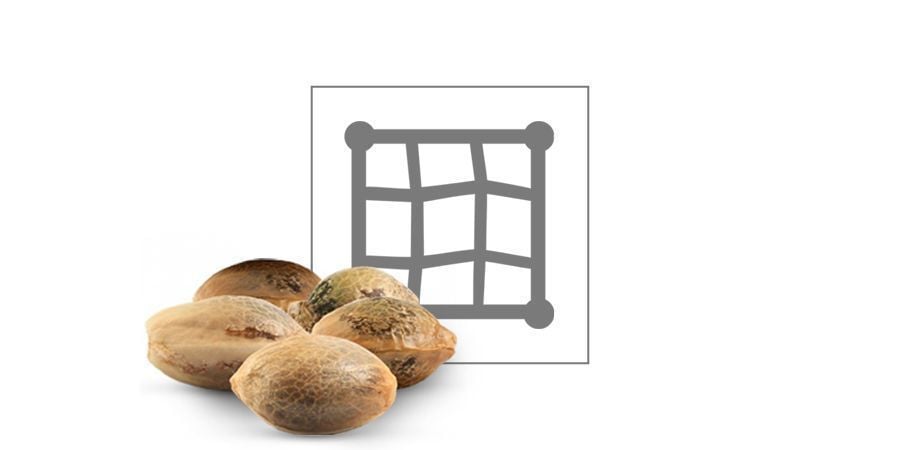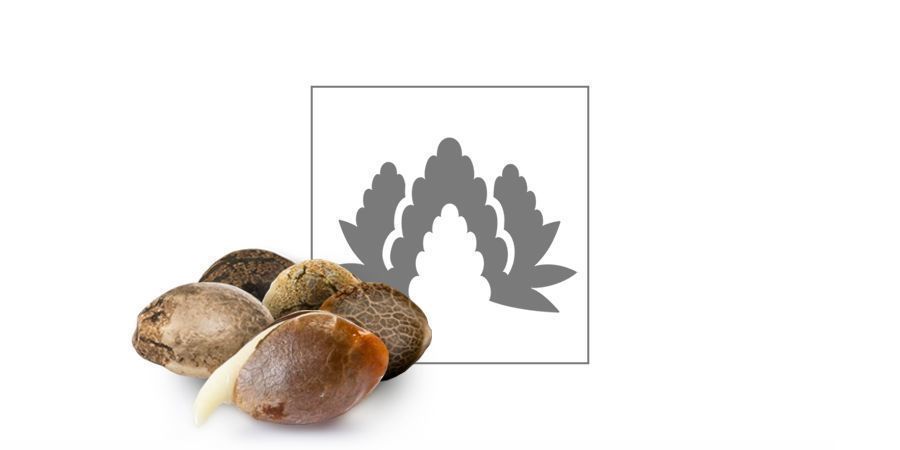
ScrOG Vs. SOG: Which Is Right For You?
When it comes to growing cannabis, advanced techniques like ScrOG and SOG can really help growers make the most of their plants. So let’s take a look at them both.
The ScrOG and SOG methods of growing cannabis are both advanced techniques. While some growers will swear by one, some will only use the other. The thing is, neither one is necessarily superior to the other, they both have their advantages and disadvantages, and are more suited to different situations. Becoming a good grower isn’t about deciding which is better than the other, but understanding both, allowing you to choose the right for your particular needs at the time.
GROWING WITH THE SCROG TECHNIQUE
Let’s start by looking at the ScrOG technique (Screen of Green). At its core, ScrOG growing involves placing a screen of netting between your growing lights and your growing medium. Eventually, the cannabis plant grows up to the screen, and then each branch is trained along the netting creating a large and even canopy of growth.
It is an excellent way to take full advantage of the area covered by the lights. By creating a spread out canopy, you allow multiple bud sites to develop to their full potential, instead of just one large one on top.
Generally speaking, one cannabis plant is used per 30cm square of netting, but this will depend on the strain being grown. Also, once a canopy is established, most growers will prune the lower leaves as they are inaccessible to the light – as they are wasted energy for the plant to maintain.
An important factor to take into account when using the ScrOG technique is timing. Depending on the genetics, cannabis plants can react differently when switched over to a flowering photoperiod. Some will stretch and rapidly fill out while others won’t. This will determine how long you leave a cannabis plant in its vegetative stage when using the ScrOG technique.
If you are working with genetics that go into overdrive when flowering, you can change to flowering a little early, and allow this boost to fill out the canopy. If the plant isn’t a stretcher, then leaving it a couple of extra weeks will allow the canopy to fill out a little more during the veg stage. Changing to early or too soon can leave you with too much or too little plant matter to work with.
After roughly two weeks of flowering, the developing growth is allowed to start growing vertically, ensuring that fan leaves are pulled down below the net to offer as much light as possible to bud sights. As the canopy should have been fairly even up to this point, each bud site develops vertically at a similar rate, ensuring even light distribution.
The Advantages of ScrOG:
- It is easy
- Can be done with both cuttings and feminized seeds
- Offers multiple bud sites from only a few plants
- Low maintenance – you often only have a few plants to deal with
- Well suited to sativa growing
The Disadvantages of ScrOG:
- Takes longer than SOG growing
- You have to rig up a screen of netting
GROWING WITH THE SOG TECHNIQUE
Where the ScrOG technique focuses on producing multiple bud sites, the SOG (Sea of Green) technique does the opposite, forcing the cannabis plant to put all its energy into one main kola. It is a technique especially useful in constrained spaces or when you want maximum speed. Unlike the ScrOG technique, the SOG technique can only be done with clones – and we will explain why in a bit.
To perform the SOG technique clones are packed into a tight space at roughly 40 clones or more per square meter. After being given a week or two to establish, they are changed over to a flowering photoperiod. You would not be crazy for thinking that after such a short time, they may stretch a little and then produce a tiny amount of bud.
While this is a rare possibility, for some reason, the great majority of clones will go into overdrive, producing a thick stem and branches. Cannabis strains well suited to this growing technique tend to reach up towards the lights, before stopping and producing an epic kola. Generally, indicas tend to be most suited to this; plants should rarely grow beyond 30cm tall using this method, so all energy is in the main kola.
The way plants react to the SOG method is why it is important to use clones. A seedling will not react in this way - rapidly growing and able to start flowering at such an urgent pace. It is not quite sure why clones are capable of this.
Some believe it is to do with them detecting that they are not large enough to flower with the simulated fading light of autumn, and as they are not young (being clones) they are able to go into overdrive to compensate. Others say it is just a variation of stretching.
It is also worth noting that SOG growing needs a relatively strong growing light to be truly successful. If smaller HPS lamps are used, it can cause uneven growth, causing some plants to shade out others. Of course, with large lamps comes a greater need for good air circulation – especially in smaller spaces.
Advantages of SOG Growing:
- Very fast turn around
- Great for constrained spaces
- Works well with indicas
- Faster than ScrOG
Disadvantages of SOG Growing:
- High maintenance
- Can only use cuttings
- Requires strong lights
- Larger amounts of plants can cause serious legal issues
-
 5 min
5 May 2025
Simple tips to grow better weed
Think growing great weed is hard? With a few essential weed-growing tips and some basic know-how, anyone can enjoy top-shelf harvests in any setup. Get acquainted with eight essential tips for...
5 min
5 May 2025
Simple tips to grow better weed
Think growing great weed is hard? With a few essential weed-growing tips and some basic know-how, anyone can enjoy top-shelf harvests in any setup. Get acquainted with eight essential tips for...
-
 5 min
11 March 2021
The Best Cannabis Strains For 2025
The cannabis industry is ready to advance into the year of 2025. Get ready for some fresh and powerful genetics to hit the scene.
5 min
11 March 2021
The Best Cannabis Strains For 2025
The cannabis industry is ready to advance into the year of 2025. Get ready for some fresh and powerful genetics to hit the scene.
-
 2 min
18 December 2015
How To Prune Cannabis Plants
Pruning your cannabis can be a great way to push it further than it would normally go. Not only does this improve your skill as a grower, but results in some much larger yields of that sweet green...
2 min
18 December 2015
How To Prune Cannabis Plants
Pruning your cannabis can be a great way to push it further than it would normally go. Not only does this improve your skill as a grower, but results in some much larger yields of that sweet green...
-
 2 min
30 November 2015
Growing Indoors Vs. Outdoors: The Pros And Cons
There are some significant differences between growing cannabis indoors and outdoors. Knowing them can help you decide which is best for you.
2 min
30 November 2015
Growing Indoors Vs. Outdoors: The Pros And Cons
There are some significant differences between growing cannabis indoors and outdoors. Knowing them can help you decide which is best for you.





 United States
United States

.jpg)













